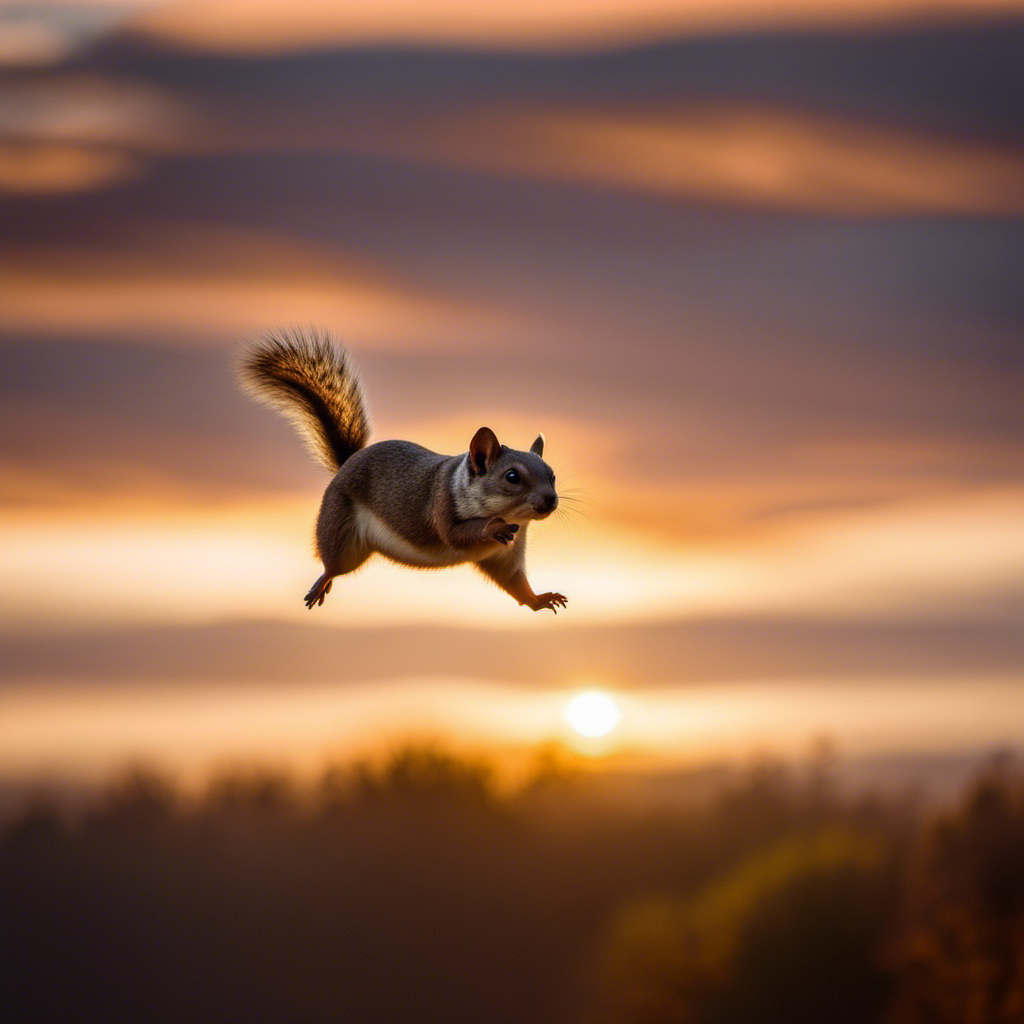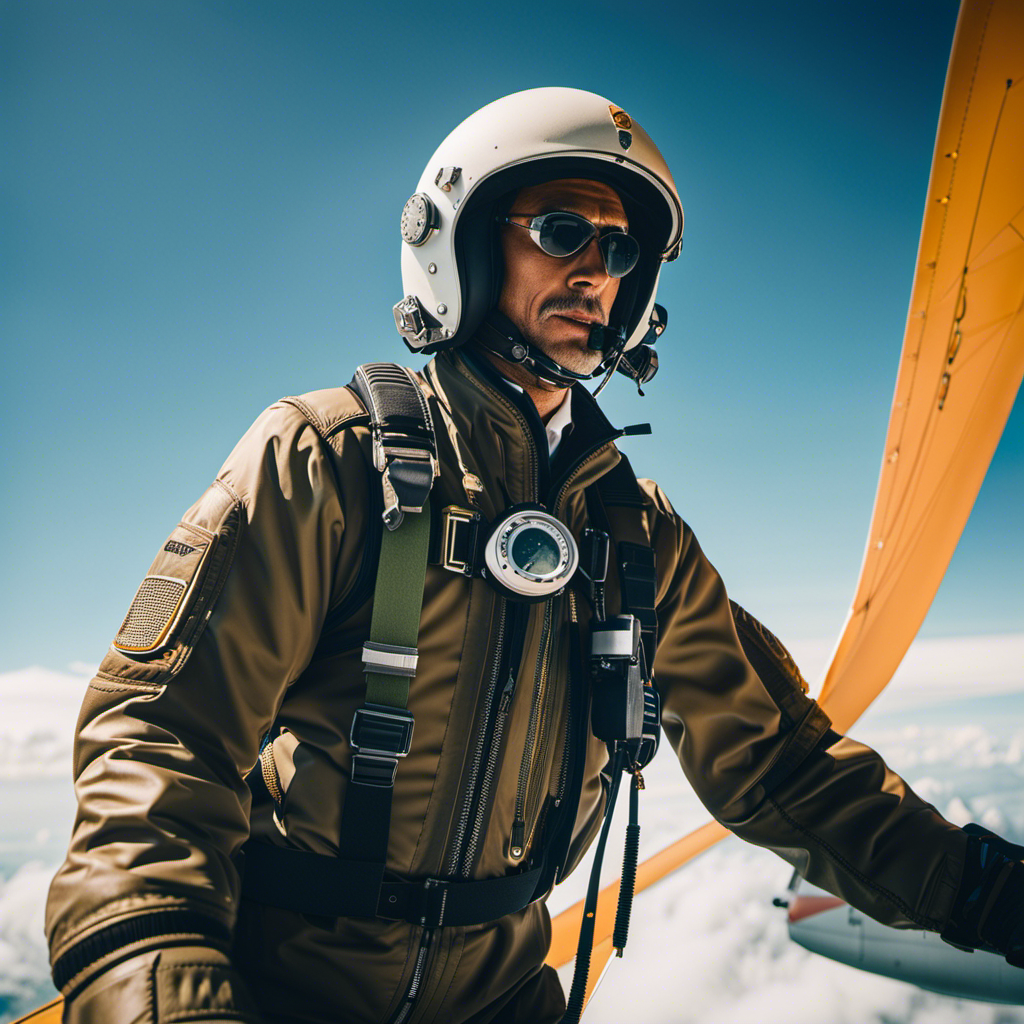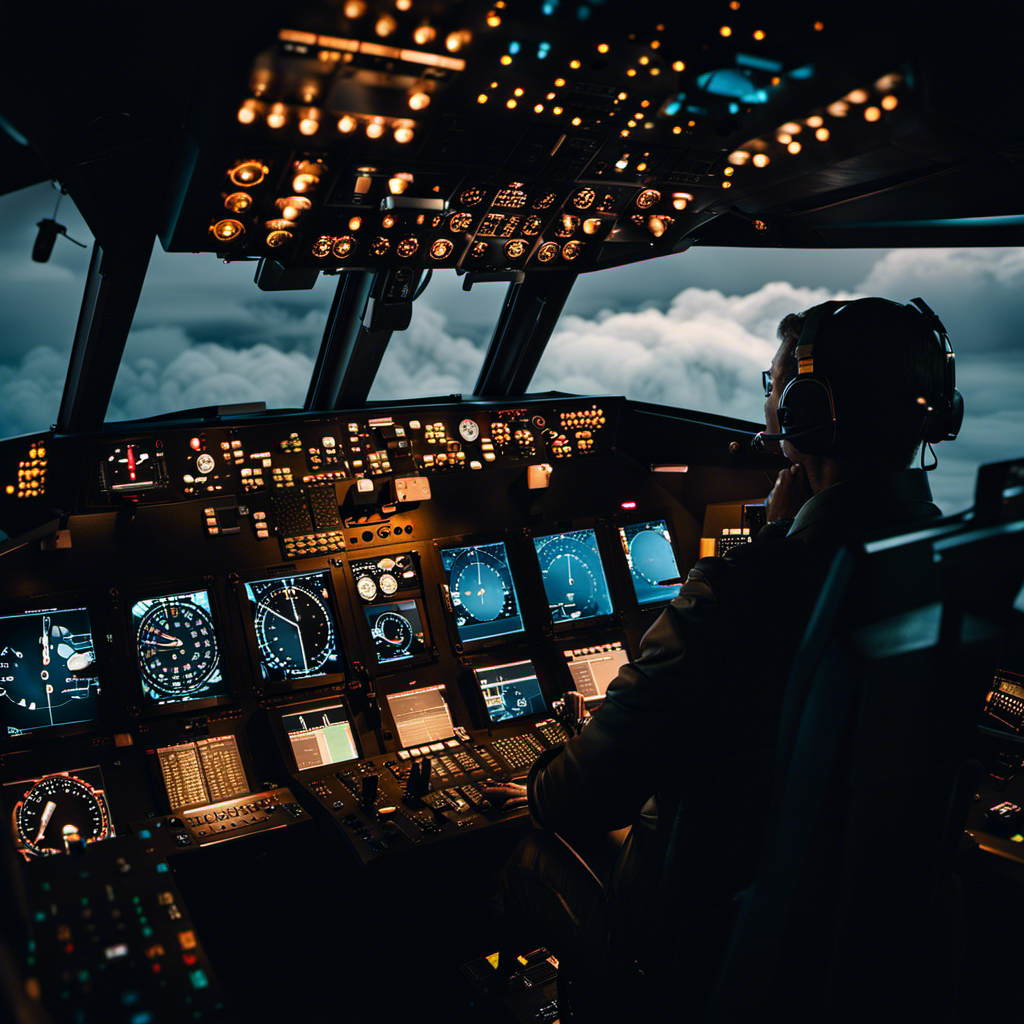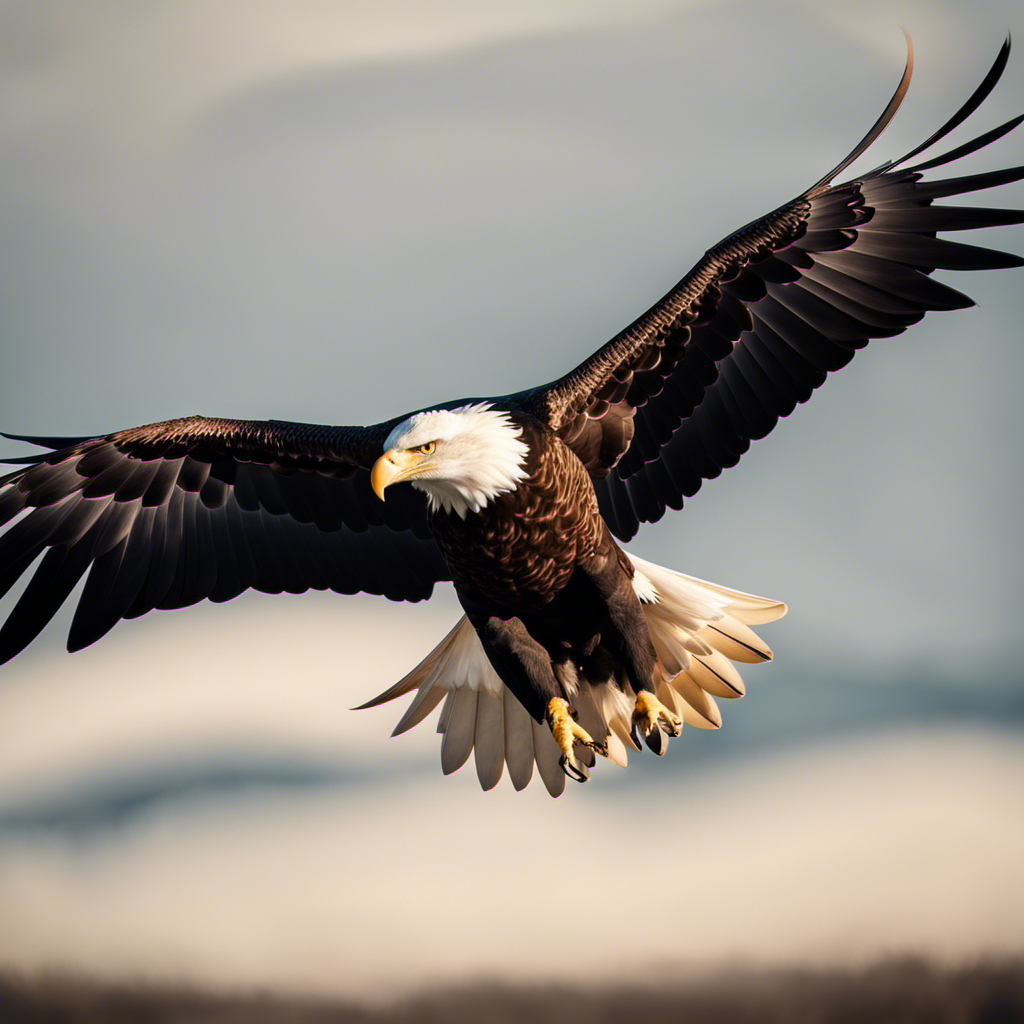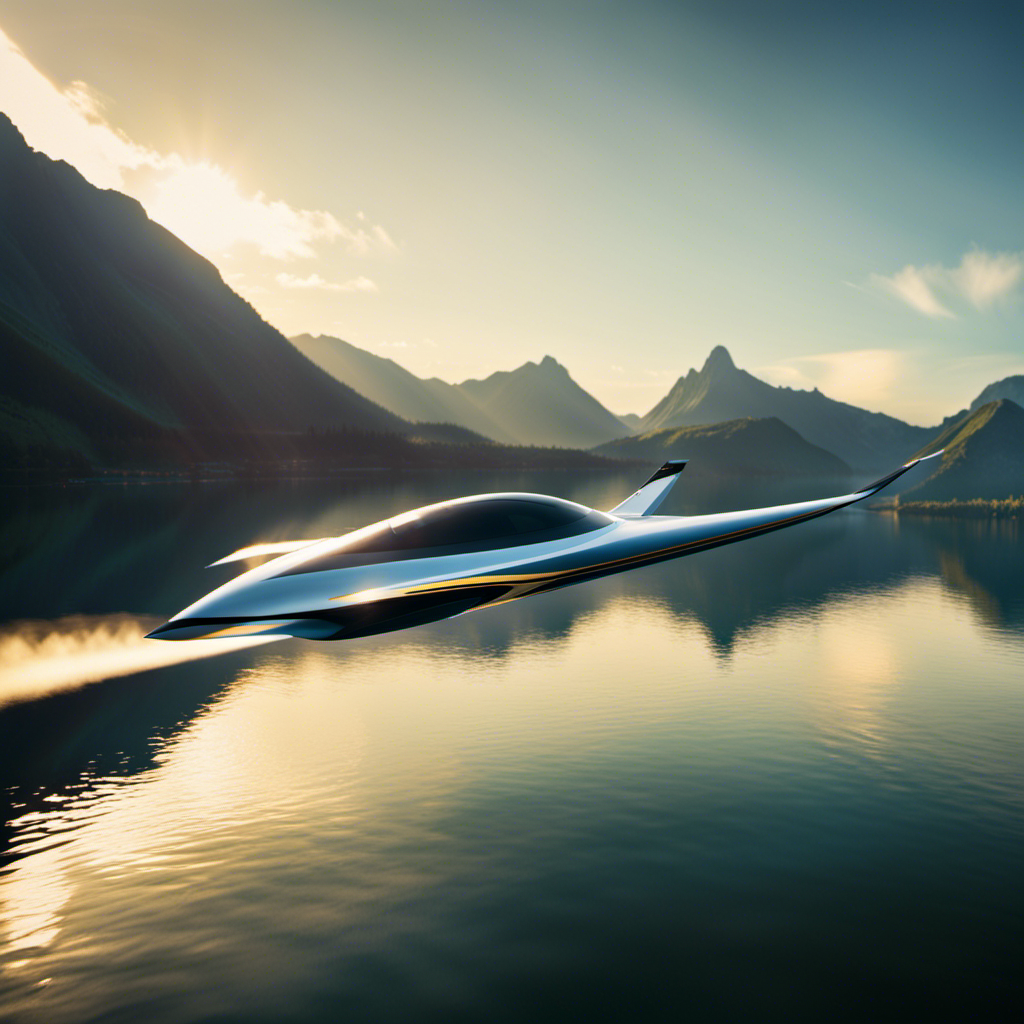Ever thought about which animals possess the impressive skill of gliding through the air? Get ready to be astonished as we explore the realm of gliding creatures.
From the graceful flying squirrels and sugar gliders to the majestic gliding birds like the albatross and frigatebirds, nature has bestowed some incredible adaptations upon these animals.
Join me on this scientific journey as we explore the various species that have mastered the art of gliding. Let’s uncover the secrets of these airborne wonders together.
Key Takeaways
- Gliding mammals such as flying squirrels, sugar gliders, draco lizards, and colugos are capable of moving by gliding.
- Other species that can move by gliding include paradise tree snakes, gliding ants, gliding frogs, and gliding geckos.
- Gliding animals have unique toe pads and adaptations that help them in their gliding movements.
- Gliding geckos exhibit impressive control and maneuverability during their glides, with different species of gliding geckos showcasing varying abilities.
Flying Squirrels
Flying squirrels are known for their ability to glide through the air using flaps of skin between their limbs. These remarkable creatures have unique adaptations that allow them to effortlessly navigate through the forest canopy.
The lifestyle and behavior of flying squirrels are centered around their gliding abilities. They primarily inhabit wooded areas and are nocturnal, spending their days nestled in tree cavities or nests made of leaves and twigs. When night falls, they become active, using their sharp claws and strong hind limbs to climb trees and leap into the air.
As they glide, their patagium, the stretchy membrane between their forelimbs and hindlimbs, acts as a parachute, allowing them to gracefully maneuver from tree to tree. Unlike other gliding mammals, such as sugar gliders, flying squirrels have a flatter patagium, which enables them to glide longer distances. This adaptation is crucial for their survival, as it allows them to search for food, avoid predators, and find suitable mates.
With their extraordinary gliding abilities, flying squirrels effortlessly navigate their arboreal habitat, demonstrating the remarkable adaptations that enable them to thrive.
As we explore the lifestyle and behavior of gliding animals, we turn our attention to another fascinating creature, the sugar glider.
Sugar Gliders
You’ll love learning about sugar gliders and how they effortlessly soar through the air.
Sugar gliders are small, nocturnal marsupials native to Australia, New Guinea, and Indonesia. They have a unique gliding skin adaptation that allows them to glide from tree to tree in search of food and shelter. This adaptation is made possible by a membrane of skin called the patagium, which stretches between their wrists and ankles.
When a sugar glider wants to glide, it extends its limbs and spreads the patagium, creating a wing-like structure. By adjusting the position of their body and tail, sugar gliders can control their direction and speed while gliding. They can glide for impressive distances of up to 150 feet, using their tail as a rudder to steer.
The gliding ability of sugar gliders is an important adaptation that helps them navigate their forest habitat and escape from predators.
Now, let’s move on to another fascinating gliding creature, the draco lizards, also known as flying dragons.
Draco Lizards (Flying Dragons)
The draco lizards, also known as flying dragons, have a unique adaptation that allows them to glide through the air. These remarkable creatures possess several unique features that enable them to glide effectively and survive in their environment. Here are four fascinating aspects of draco lizards’ gliding abilities:
-
Elongated Ribs: Draco lizards have elongated and extendable ribs, which act as wings during gliding. These ribs are supported by specialized muscles that allow the lizards to control their movement and direction in the air.
-
Patagium: A stretchy membrane called the patagium extends between the ribs, connecting the forelimbs and hindlimbs. This membrane acts as a parachute, providing the necessary surface area for gliding.
-
Tail Steering: The long and slender tail of draco lizards plays a crucial role in gliding. By manipulating their tail, they can adjust their body position and stabilize themselves during flight.
-
Camouflage: Another unique feature of draco lizards is their ability to change color. This helps them blend into their surroundings, making it difficult for predators to spot them while they are gliding.
The benefits of gliding for draco lizards are numerous. Gliding allows them to efficiently move between trees, escape predators, and access food sources that may be otherwise inaccessible. It also conserves their energy, as they can cover large distances without expending too much effort.
Transitioning to the subsequent section about colugos (flying lemurs), these creatures also possess remarkable gliding abilities.
Colugos (Flying Lemurs)
Colugos, also known as flying lemurs, are fascinating creatures with unique gliding skin and anatomy. Despite their name, they are not lemurs at all, but rather belong to a separate group of mammals called treeshrews.
Their skin forms a large, parachute-like membrane that allows them to glide effortlessly through the rainforest canopy, covering distances of up to 70 meters in a single leap.
Understanding their lifestyle and behavior, as well as the reasons behind their misnomer, is crucial in unraveling the mysteries of these remarkable creatures.
Unique gliding skin and anatomy
With their unique gliding skin and anatomy, colugos can effortlessly glide through the treetops. The colugo’s skin is adapted for gliding, with a thin and stretchy membrane called a patagium that extends from its neck to the tips of its fingers and toes.
This patagium allows the colugo to create an aerodynamic surface that catches the wind and enables it to glide for long distances. The colugo’s elongated limbs and claws also contribute to its gliding abilities, allowing it to maneuver and cling to tree trunks.
These lifestyle adaptations provide the colugo with several evolutionary advantages. By gliding, colugos can efficiently move through their forest habitat, accessing food sources and avoiding predators. Additionally, their gliding abilities allow them to navigate between trees without the need to descend to the forest floor.
This unique adaptation is crucial for their survival and plays a significant role in the lifestyle and behavior of colugos.
Lifestyle and behavior of colugos
To understand the lifestyle and behavior of colugos, you’ll be fascinated by their ability to glide effortlessly through the treetops. Colugos, also known as flying lemurs, have a specialized skin membrane called a patagium that stretches between their limbs, allowing them to glide for long distances.
Their diet primarily consists of leaves, flowers, and fruits, with a preference for young leaves that are easier to digest.
During the mating season, male colugos engage in intense competition for females. They emit distinctive calls and perform acrobatic displays to attract mates.
Once a female has been courted, she will give birth to a single offspring after a gestation period of about 60 days.
Despite being called ‘flying lemurs,’ colugos are not actually lemurs but belong to their own unique group of mammals.
Why they are called "flying lemurs" despite not being lemurs
Despite not being lemurs, colugos are called ‘flying lemurs’ due to their ability to glide effortlessly through the treetops. This name is a misnomer, as colugos are not lemurs and share no evolutionary relation with them. However, their unique gliding abilities are what earned them this misleading title.
Here are four reasons why colugos are known as ‘flying lemurs’:
-
Patagium: Colugos possess a patagium, a stretch of skin that extends between their limbs, allowing them to glide. This membrane acts as a parachute, enabling them to cover long distances in search of food and mates.
-
Adapted Limbs: Their limbs have elongated fingers and toes that support the patagium, providing stability and control during glides.
-
Powerful Muscles: Colugos have strong muscles in their shoulders and chest, which allow them to generate enough force for takeoff and maintain stability in the air.
-
Agile Navigators: They possess exceptional agility and control in the air, using their tail as a rudder to change direction and adjust their flight path.
With their incredible gliding abilities, colugos showcase a remarkable adaptation for arboreal life.
Now, let’s explore another fascinating gliding creature, the paradise tree snake.
Paradise Tree Snakes
Paradise Tree Snakes can glide through the air using their unique adaptations. These snakes, scientifically known as Chrysopelea paradisi, possess a remarkable ability to glide from tree to tree, allowing them to access new food sources and escape potential threats.
Their gliding ability is made possible by their distinct gliding skin and anatomy. The skin of paradise tree snakes is covered in specialized scales that give them a smooth and aerodynamic surface. These scales also allow the snakes to change their body shape, enhancing their gliding ability. When preparing to glide, the snakes flatten their bodies and extend their ribs, creating a wider surface area. This increased surface area, combined with the snake’s ability to undulate its body to generate lift, enables them to glide through the air for impressive distances.
In addition to their unique skin, paradise tree snakes have a long and slender body, which aids in their gliding maneuvers. Their bodies are highly flexible, allowing them to contort and adjust their shape mid-glide. This flexibility enables them to navigate through the dense foliage of the trees with ease, making their gliding movements seem almost effortless.
Transitioning to the subsequent section about ‘gliding ants’, these remarkable creatures have also evolved incredible adaptations for moving through the air.
Gliding Ants
You’ll be amazed by the unique adaptations of gliding ants as they effortlessly navigate through the air. These tiny creatures have evolved remarkable features that allow them to glide from tree to tree in search of food and mates.
One of their most fascinating adaptations is their unique toe pads, which enable them to cling onto surfaces and glide with ease. These toe pads are covered in tiny hairs that create a suction-like effect, allowing the ants to stick to smooth surfaces and even navigate across vertical or inverted surfaces.
To better understand the incredible abilities of gliding ants, imagine the following scenario:
- Picture a gliding ant perched on the edge of a leaf, ready to take flight.
- Watch as the ant extends its legs and spreads its wings, preparing for takeoff.
- Marvel at the way it effortlessly glides through the air, its tiny body gracefully soaring from one tree to another.
With their unique toe pads, gliding ants have unlocked a whole new world of possibilities. They can explore new territories, find resources, and escape predators with ease.
But gliding is not limited to ants alone; there are other fascinating gliding creatures in the animal kingdom, such as gliding frogs. Transitioning from gliding ants to gliding frogs, we delve into a different realm of gliding adaptations.
Gliding Frogs
Transitioning to gliding frogs, we enter a whole new realm of amphibian adaptations. Gliding frogs belong to the family Rhacophoridae and are found in Southeast Asia. These fascinating creatures possess unique gliding skin adaptations that allow them to glide through the air and cover considerable distances in search of food or mates.
Gliding frogs have large, webbed feet that are specially designed for gliding. Their toes are elongated and connected by a thin membrane of skin, called the interdigital webbing. This webbing acts as a parachute, providing lift and stability during gliding. Additionally, their bodies are flattened, which reduces air resistance and enables them to glide more efficiently.
The skin of gliding frogs is another remarkable adaptation. It is highly elastic and covered in small, granular structures called tubercles. These tubercles increase surface area and create a rough texture, allowing the frogs to stick to surfaces and maintain grip while gliding. This unique skin adaptation also helps them camouflage with their surroundings.
Transitioning to gliding geckos, we observe yet another group of animals that have evolved the ability to glide.
Gliding Geckos
Gliding geckos, like their frog counterparts, have evolved unique adaptations for their aerial locomotion. Their toe pads are one such adaptation, allowing them to stick to surfaces and support their gliding abilities. These toe pads are covered in millions of microscopic hairs called setae, which create strong adhesive forces.
As for how geckos control their glides, they use slight shifts in their body position and tail movements to adjust their trajectory and maintain stability in the air.
There are several different species of gliding geckos, each with their own variations in morphology and gliding abilities, making them a fascinating subject for further study.
Unique toe pads and adaptations for gliding
With its unique toe pads and adaptations, you can easily glide through the air. Gliding is a fascinating mode of locomotion observed in various animals, allowing them to travel long distances without the need for continuous flapping of wings or leg movement.
Some of the unique gliding adaptations found in animals include specialized skin flaps, elongated limbs, and lightweight bodies. These adaptations enable animals to generate lift and control their descent while gliding.
During gliding, animals exhibit specific behaviors such as adjusting their body posture, manipulating their limbs, and making aerial maneuvers to navigate through the environment. Understanding the gliding behavior of animals and the adaptations that facilitate this movement can provide insights into the evolution of locomotion strategies.
Now, let’s explore how geckos control their glides.
How geckos control their glides
In the previous section, we explored the unique adaptations of geckos that enable them to glide through the air. Now, let’s delve into how these fascinating creatures control their glides.
Geckos possess a remarkable ability to maneuver and adjust their flight path mid-glide, thanks to their specialized toe pads and muscular control. These toe pads, covered in millions of tiny hair-like structures called setae, allow geckos to adhere to various surfaces, providing them with stability and control during gliding.
By adjusting the angle and position of their limbs, geckos can manipulate their body posture and control their gliding speed and direction. Additionally, geckos possess a highly developed sensory system that helps them detect changes in airflow and adjust their flight accordingly.
With these impressive gliding adaptations, geckos exhibit exceptional control over their aerial journeys.
Moving on to the next section, let’s explore the different species of gliding geckos.
Different species of gliding geckos
Geckos of various species can control their glides by adjusting their body posture and manipulating their limbs. These unique adaptations allow them to navigate through the air with precision and agility. Each species has its own gliding techniques, which are influenced by their body shape, size, and habitat. To provide a comprehensive overview of the different gliding geckos, I have compiled a table showcasing three species and their respective characteristics.
| Species | Body size | Gliding distance |
|---|---|---|
| Flying Gecko | Small | 30 meters |
| Tokay Gecko | Medium | 20 meters |
| Wonder Gecko | Large | 15 meters |
As we explore further into the world of gliding animals, let’s now turn our attention to the fascinating gliding fish, which has evolved its own unique ways of moving through water without swimming.
Gliding Fish
Did you know that gliding fish can travel impressive distances through the air? It may sound unbelievable, but these unique creatures have adapted to glide above the water’s surface using their specialized fins. Let me explain further:
-
Gliding fish have a unique gliding skin that allows them to glide through the air. This skin is highly flexible and acts like a wing, providing lift and stability during their aerial journeys.
-
The gliding skin is made up of thin, elongated scales that are connected by a flexible membrane. This structure allows the fish to stretch out its fins and create a larger surface area for gliding.
-
The scales on the gliding skin are covered in tiny, microscopic ridges that reduce drag and turbulence, enabling the fish to glide smoothly through the air.
With their impressive gliding abilities, these fish can cover remarkable distances and reach heights of several meters above the water.
However, as fascinating as gliding fish may be, they are not the only animals capable of gliding. Transitioning to the next section, let’s explore the world of gliding birds, such as albatross and frigatebirds, who have also mastered the art of soaring through the skies without flapping their wings.
Gliding Birds (e.g., Albatross, Frigatebirds)
After exploring the fascinating world of gliding fish, let us now turn our attention to gliding birds. Among these aerial masters, two species stand out for their exceptional gliding abilities: the albatross and the frigatebirds. As an ornithologist, I have had the privilege of studying these magnificent creatures up close, and I am continually amazed by their lifestyle and behavior.
The albatross, known for its impressive wingspan and graceful flight, spends the majority of its life soaring over the open ocean. These birds have evolved specialized adaptations that enable them to glide effortlessly for hours on end. Their long, slender wings and streamlined bodies minimize drag, allowing them to ride the air currents with minimal effort. Additionally, albatrosses have a unique shoulder joint that allows for a greater range of motion, further enhancing their gliding abilities.
On the other hand, frigatebirds have developed their own set of adaptations for gliding. These birds possess exceptionally long, slender wings that generate lift and reduce drag. Their forked tails act as rudders, providing stability and maneuverability during flight. Furthermore, frigatebirds have a lightweight skeleton and reduced muscle mass, enabling them to conserve energy while soaring through the skies.
To highlight the remarkable adaptations of these gliding birds, let’s take a closer look at their characteristics side by side:
| Albatross | Frigatebirds |
|---|---|
| Long wingspan | Slender wings |
| Streamlined body | Forked tail |
| Flexible shoulder joint | Lightweight skeleton |
| Reduced muscle mass |
Frequently Asked Questions
How do flying squirrels use their tail to glide?
Flying squirrels use their tail as a rudder while gliding, allowing them to change direction mid-glide. They have specialized gliding adaptations, such as patagium (skin flaps) and a flattened body shape, which enable them to glide efficiently through the air.
Are sugar gliders able to glide long distances?
Sugar gliders are nocturnal animals known for their ability to glide. They can glide long distances due to their specialized membrane called a patagium. While they can be kept as pets, they require specific care and may not be suitable for everyone.
What is the difference between gliding and flying for draco lizards?
The difference between gliding and flying mechanics in flying fish lies in their ability to use their modified fins to glide through the air, while flying lemurs rely on a membrane of skin called a patagium to glide without wings.
How do colugos use their skin to glide?
Colugos use their skin adaptations to glide through the forest canopy. Their patagium, a thin membrane stretching between their limbs and tail, allows them to glide effortlessly. Gliding provides colugos with an efficient mode of transportation and helps them avoid predators.
Can paradise tree snakes glide from tree to tree or only downwards?
Can paradise tree snakes glide from tree to tree or only downwards? The hunting techniques of paradise tree snakes and the evolution of gliding in animals are fascinating topics to explore.
Conclusion
In conclusion, after exploring a variety of animals that move by gliding, it is fascinating to witness the adaptations and abilities that enable them to navigate through the air.
From the graceful flight of flying squirrels and sugar gliders to the astonishing gliding capabilities of draco lizards and colugos, nature has bestowed upon these creatures the gift of flight.
As we delve into the realms of gliding frogs, geckos, fish, and even birds, we are reminded of the sheer diversity and wonder of the animal kingdom.
Through their aerial feats, these gliders paint the sky with an ethereal beauty, captivating our senses and igniting a sense of awe within us.
Truly, nature’s gliders are the poets of the air, effortlessly dancing through the heavens in a symphony of grace and freedom.
